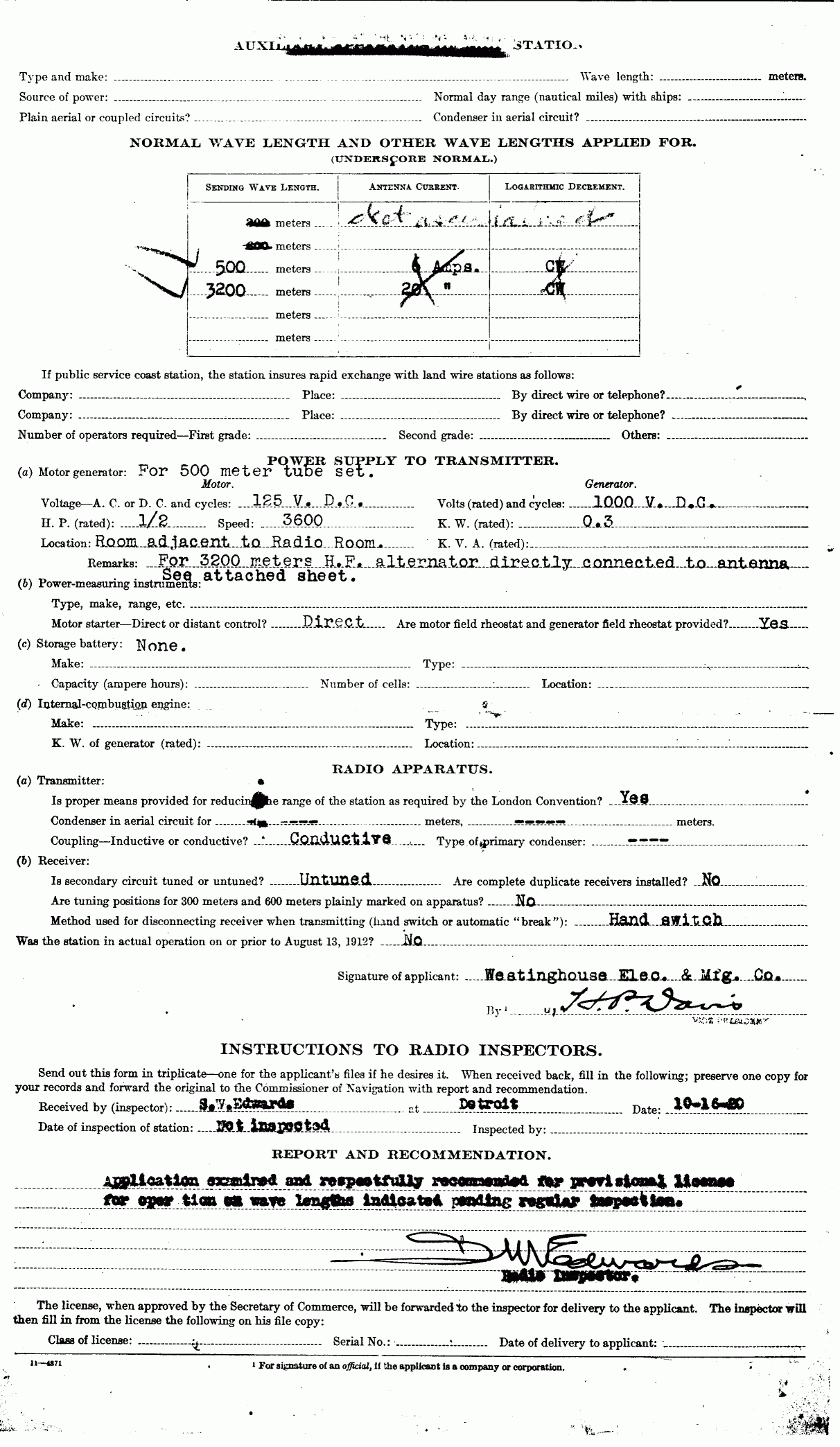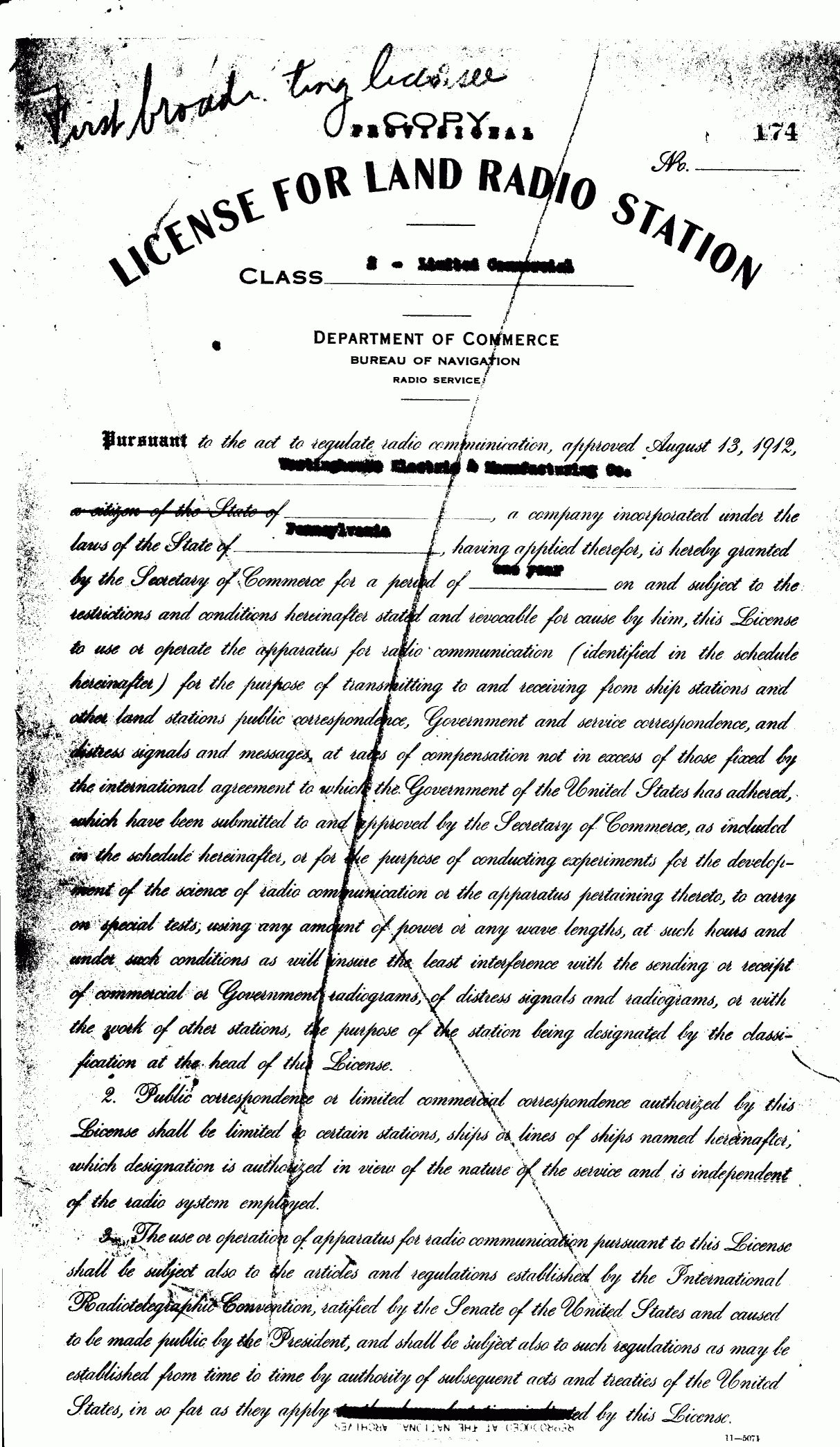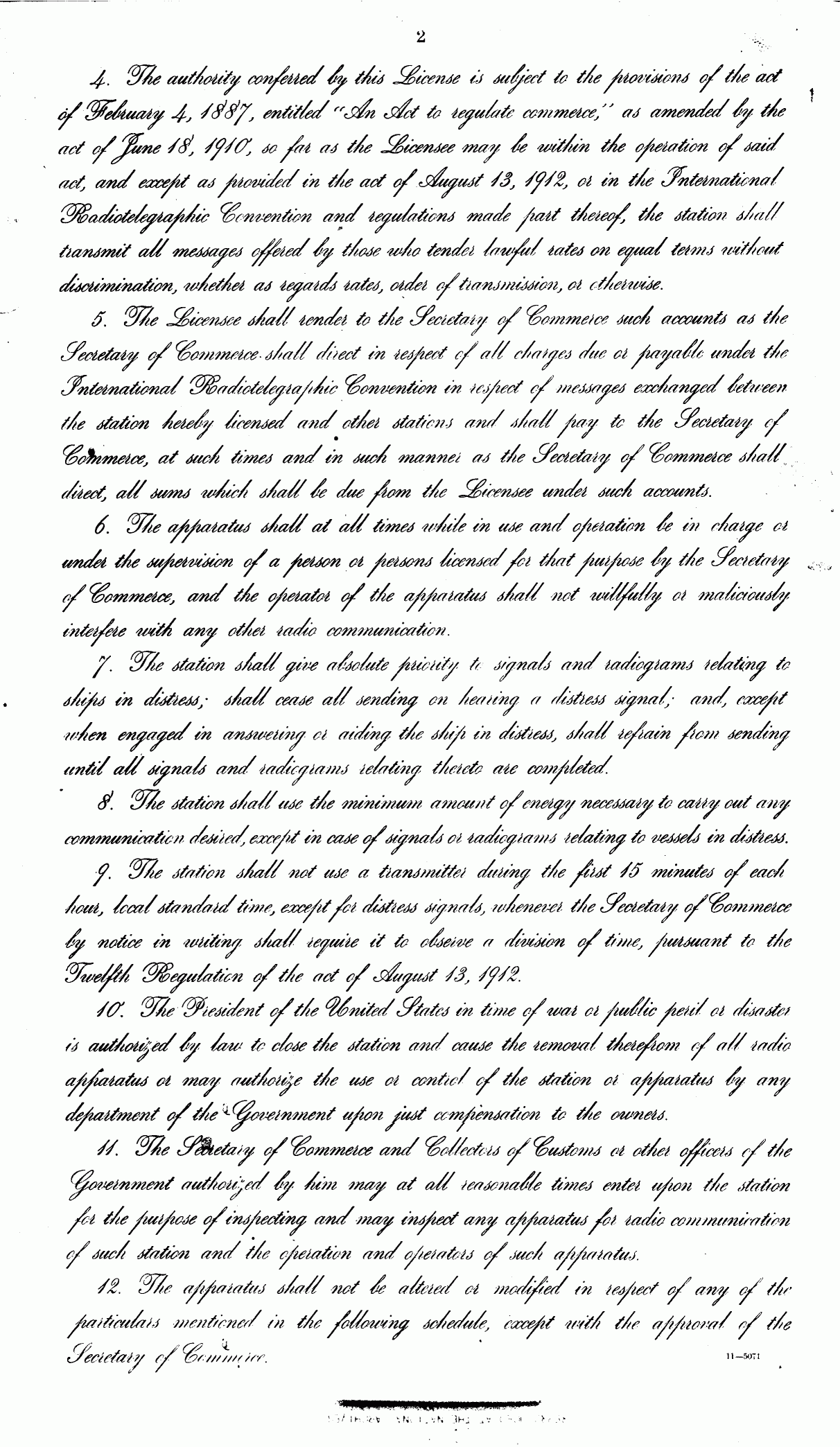Displayed below is the Westinghouse Electric and Manufacturing Company's October, 1920 application, followed by the initial licence, for a Limited Commercial radio station in East Pittsburgh, Pennsylvania, which would be assigned the call letters KDKA.
This facility was used to debut Westinghouse's new radio broadcasting service, starting with election returns on November 2, 1920. Interestingly, neither the application nor licence makes any mention of this broadcasting service, only that the station would be primarily used for point-to-point radiotelegraph communication between Westinghouse factories. Moreover, the initial radio broadcasts actually used the temporarily assigned Special Amateur call of 8ZZ for the first few days. Thus, it appears that initially there was some review, until it was decided that both the radiotelegraph point-to-point operations and the broadcasting service could operate under KDKA's Limited Commercial licence.
The two-page "Form 761: Applicant's Description of Apparatus" was signed by Westinghouse's H. P. Davis and submitted to S. W. Edwards, the Radio Inspector for the eighth district, headquartered in Detroit, Michigan. After receiving the form on October 16, 1920, Edwards recommended that the station be issued a "provisional" licence (meaning that the equipment had not yet been inspected), and fowarded the 761 form with his recommendation to the Commerce Department's Bureau of Navigation in Washington, D.C., where it was received two days later.
At this point the new station received the callsign of KDKA. (This callsign was randomly assigned and something of a fluke -- see The KDKA Anomaly for more details.) Reflecting the fact that the station was intended for point-to-point communication, a standard four-page Limited Commercial licence was issued on October 27, 1920, serial #174, duration of one year. (See United States Pioneer Broadcast Service Stations for a discussion of the various licence classes and regulations. KDKA's second licence would be issued on November 7, 1921). The handwritten notation, "First Broadcasting Licensee", was presumably added later.
Both the application and licence specify the use of 3200 meters (93.75 kilohertz) by a 2,000 watt alternator-transmitter, and 500 meters (600 kilohertz) by a 200-watt vacuum-tube transmitter. However, for the November 2, 1920 broadcast 8ZZ would transmit on 550 meters (545 kilohertz), and after the broadcasting service switched to using the KDKA call, the wavelength later changed to 330 meters (909 kilohertz). In the fall of 1921, the four Westinghouse stations (KDKA, WJZ, KYW and WBZ) all moved to a common wavelength of 360 meters (833 kilohertz).













